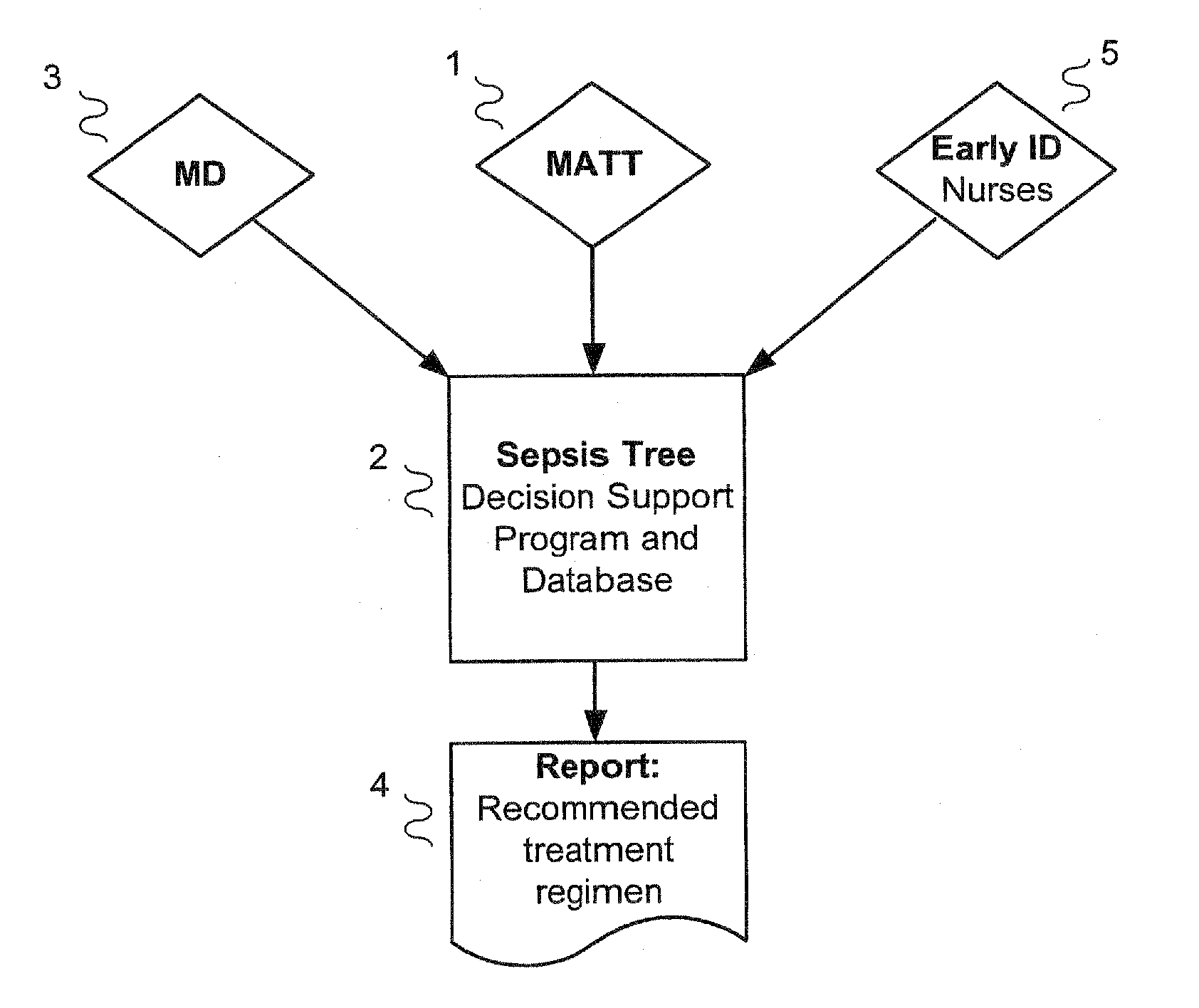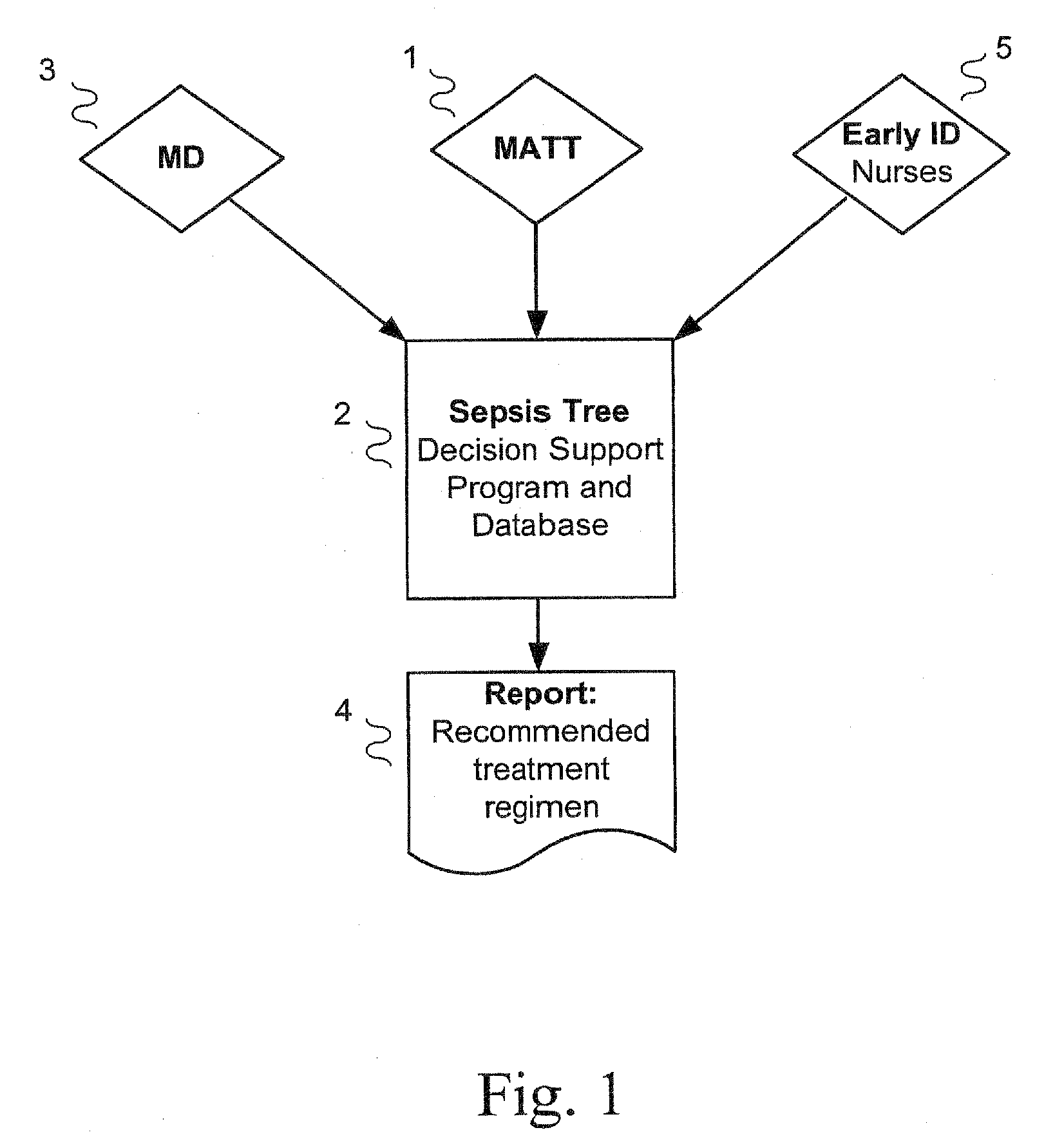System for Improving Antibiotic Use in Acute Care Hospitals
a technology for acute care hospitals and antibiotics, applied in the field of acute care hospital antibiotic use improvement systems, can solve the problems of morbidity and mortality, contribute substantially to health care costs, and often inappropriate antimicrobial therapy for these patients, and achieve the effects of improving antibiotic use, improving general antibiotic use, and improving general antibiotic us
- Summary
- Abstract
- Description
- Claims
- Application Information
AI Technical Summary
Benefits of technology
Problems solved by technology
Method used
Image
Examples
example
In accordance with the present invention, the following steps can be implemented in one embodiment:i. Assessing the hospital or healthcare center, including targeting problems areas of antibiotic use, establishing the rate of infectious diseases of interest, and identifying antibiotic / antimicrobial resistant organisms;ii. Establishing benchmarks (length of stay, credit for each day saved, credit for reduced pharmacy costs, credit for reducing surgical infections);iii. Establishing case finding methods for the MATT members;iv. Establishing communication and data collection systems, including the preferred method for communicating with specific attending physicians;v. Establishing a MATT;vi. Establishing and implementing protocols, including MATT and attending physician communication regarding patient cases.
In certain embodiments of the invention, any one or combination of the following steps are also performed in order to promote optimal administration of antimicrobial / antibiotic the...
PUM
 Login to View More
Login to View More Abstract
Description
Claims
Application Information
 Login to View More
Login to View More - R&D
- Intellectual Property
- Life Sciences
- Materials
- Tech Scout
- Unparalleled Data Quality
- Higher Quality Content
- 60% Fewer Hallucinations
Browse by: Latest US Patents, China's latest patents, Technical Efficacy Thesaurus, Application Domain, Technology Topic, Popular Technical Reports.
© 2025 PatSnap. All rights reserved.Legal|Privacy policy|Modern Slavery Act Transparency Statement|Sitemap|About US| Contact US: help@patsnap.com


